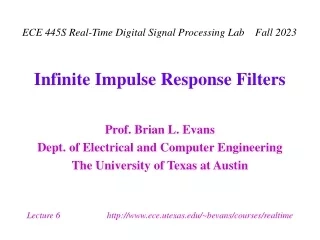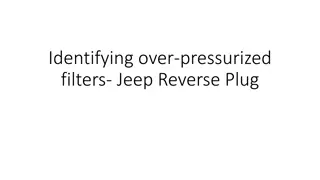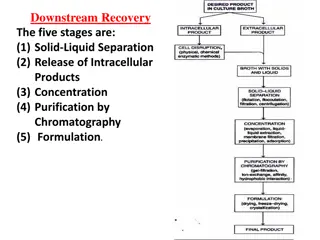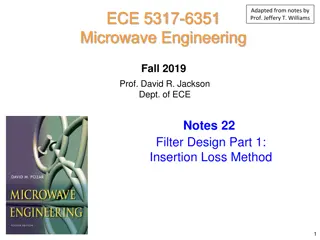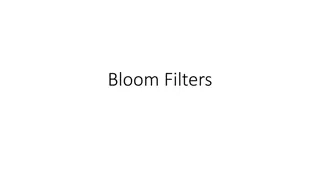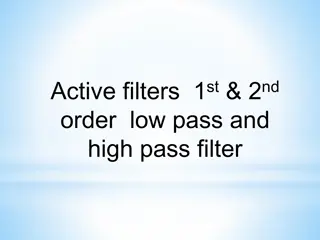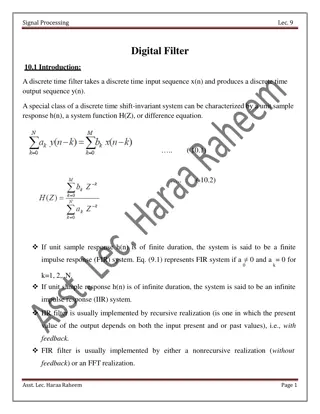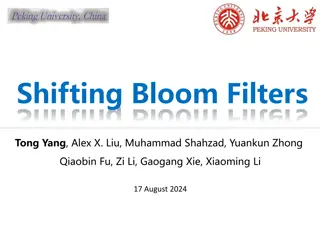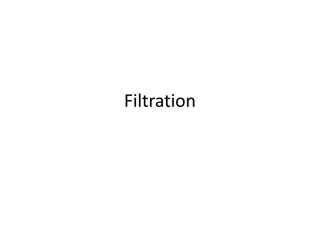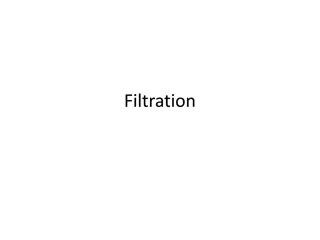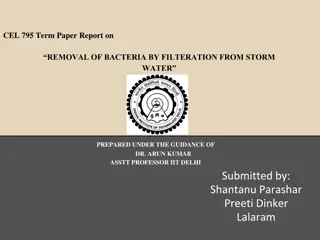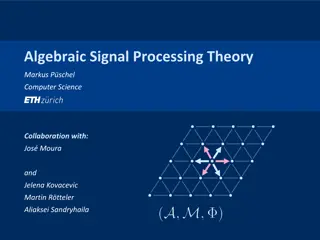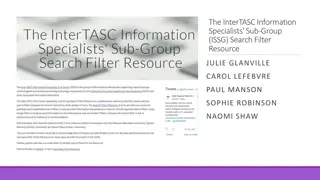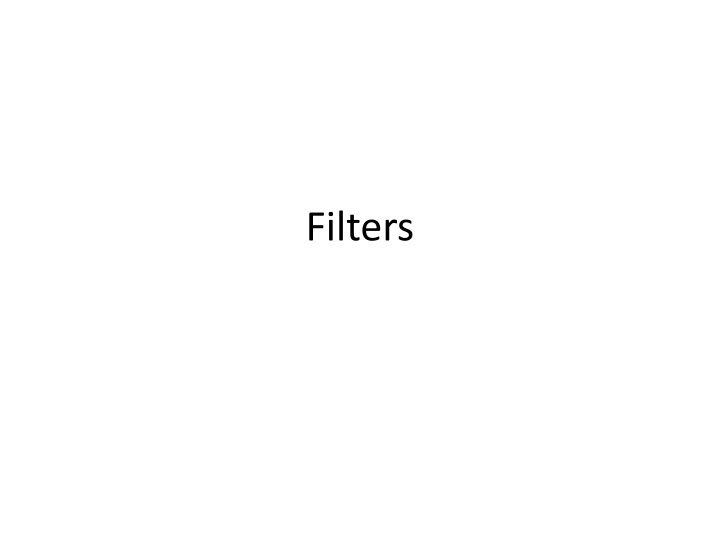
Filter Circuits for Frequency Selection
Learn about the purpose and functionality of filter circuits in selectively filtering frequencies in electronic circuits. Explore different types of filters such as low-pass and high-pass filters, their responses, and the difference between them. Discover how bandpass filters can be created by combining low-pass and high-pass filters to pass specific frequency bands.
Download Presentation

Please find below an Image/Link to download the presentation.
The content on the website is provided AS IS for your information and personal use only. It may not be sold, licensed, or shared on other websites without obtaining consent from the author. If you encounter any issues during the download, it is possible that the publisher has removed the file from their server.
You are allowed to download the files provided on this website for personal or commercial use, subject to the condition that they are used lawfully. All files are the property of their respective owners.
The content on the website is provided AS IS for your information and personal use only. It may not be sold, licensed, or shared on other websites without obtaining consent from the author.
E N D
Presentation Transcript
Why Filter ?? it is sometimes desirable to have circuits capable of selectively filtering one frequency or range of frequencies out of a mix of different frequencies in a circuit. A circuit designed to perform this frequency selection is called a filter circuit, or simply a filter. A filter is an AC circuit that separates some frequencies from others within mixed-frequency signals. A filter is a circuit that passes certain frequencies and attenuates or rejects all other frequencies
Low-Pass Filter Response A filter that frequencies from DC ( f=0hz ) to attenuates other frequencies above fc. low-pass is passes one fc and all
High-Pass Filter Response A high-pass filter is one that significantly attenuates or rejects all frequencies below fc and passes all frequencies above fc.
Difference between high pass filter & Law pass filter High Pass Filter At low frequencies where XC is much greater than R, the share of the signal voltage across R will be less than that across C and so the output will be attenuated. At higher frequencies, it is arranged, by suitable choice of component values, that the resistance of R will be much greater than the (now low) reactance XC, so the majority of the signal is developed across R, and little or no attenuation will occur.
Difference between high pass filter & Law pass filter At higher frequencies however, XC becomes much less than R and little of the input signal is now developed across XC. The circuit therefore attenuates the higher frequencies applied to the input and acts as a LOW PASS FILTER.
Bandpass Filter Passive Band Pass Filters can be made by connecting together a low pass filter with a high pass filter. By connecting or cascading together a single Low Pass Filter circuit with a High Pass Filter circuit, we can produce another type of passive RC filter that passes a selected range or band of frequencies that can be either narrow or wide while attenuating all those outside of this range. This new type of passive filter arrangement produces a frequency selective filter known commonly as a Band Pass Filter or BPF for short.
Bandpass filter One simple use for these types of passive filters is in audio amplifier applications or circuits such as in loudspeaker crossover filters or pre-amplifier tone controls. Sometimes it is necessary to only pass a certain range of frequencies that do not begin at 0Hz, (DC) or end at some upper high frequency point but are within a certain range or band of frequencies, either narrow or wide. By connecting or cascading together a single Low Pass Filter circuit with a High Pass Filter circuit, we can produce another type of passive RC filter that passes a selected range or band of frequencies that can be either narrow or wide while attenuating all those outside of this range. This new type of passive filter arrangement produces a frequency selective filter known commonly as a Band Pass Filter or BPF for short.
Band-Pass Filter Response A passes within frequency limit and an upper-frequency limit and rejects all other frequencies that are outside this specified band. band-pass filter signals lower- all a
Band-Stop Filter Response operation as opposite to that of the band-pass filter because frequencies within a certain bandwidth are rejected, and frequencies outside the bandwidth are passed.
Band-Stop Filter Response A band Stop Filter known also as a Notch Filter, blocks and rejects frequencies that lie between its two cut-off frequency points & passes all those frequencies either side of this range. By combining a basic RC low-pass filter with a RC high-pass filter we can form a simple band-pass filter that will pass a range or band of frequencies either side of two cut-off frequency points.
Band-Stop Filter Response For example, suppose we have a first-order low-pass filter with a cut-off frequency, L of 200Hz connected in parallel with a first-order high-pass filter with a cut-off frequency, H of 800Hz. As the two filters are effectively connected in parallel, the input signal is applied to both filters simultaneously as shown above. All of the input frequencies below 200Hz would be passed unattenuated to the output by the low-pass filter. Likewise, all input frequencies above 800Hz would be passed unattenuated to the output by the high-pass filter. However, and input signal frequencies in-between these two frequency cut-off points of 200Hz and 800Hz, that is L to H would be rejected by either filter forming a notch in the filters output response. In other words a signal with a frequency of 200Hz or less and 800Hz and above would pass unaffected but a signal frequency of say 500Hz would be rejected as it is too high to be passed by the low-pass filter and too low to be passed by the high-pass filter

